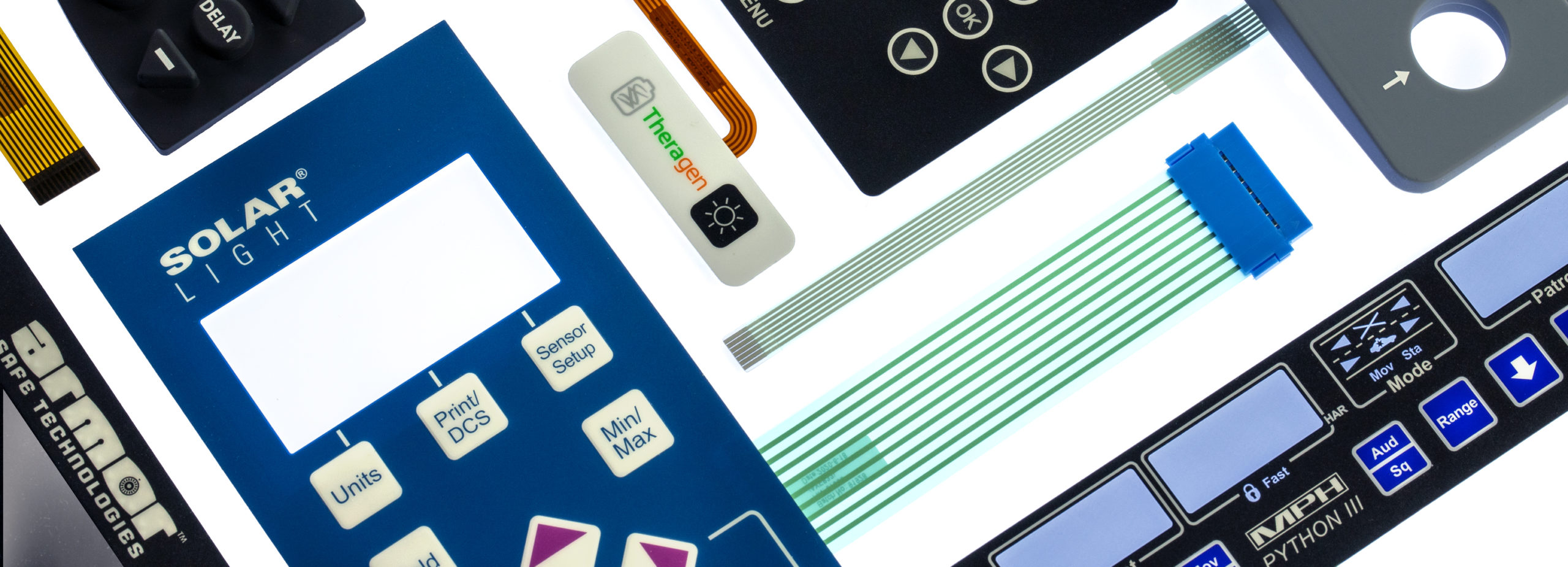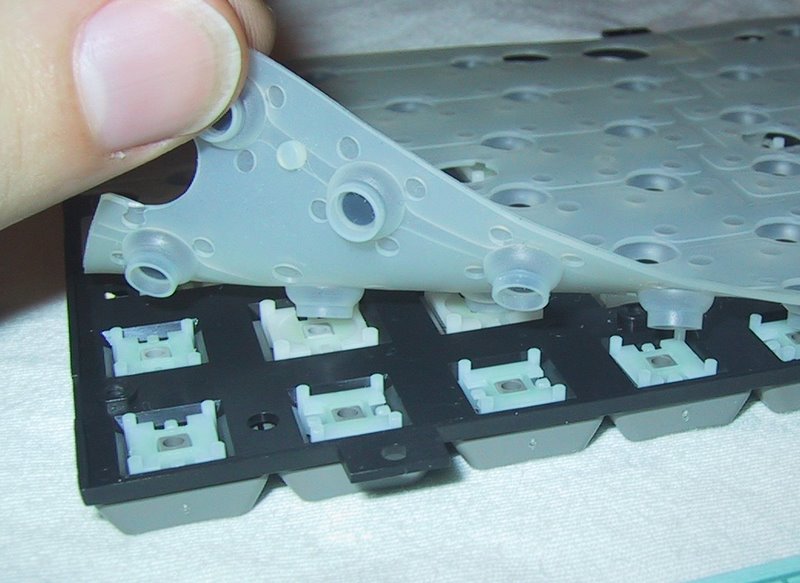Learn more about the Innovative Manufacturing Techniques Behind Membrane Switches
Learn more about the Innovative Manufacturing Techniques Behind Membrane Switches
Blog Article
The Ultimate Source on Membrane Layer Switches: Style, Functionality, and Applications
Membrane layer switches over offer as an interesting crossway of layout and functionality, playing a pivotal duty in modern-day individual interfaces across various fields. As we discover the varied applications of membrane buttons, it becomes evident that their flexibility and resilience are crucial in environments ranging from healthcare to customer electronics.

Comprehending Membrane Buttons
Membrane buttons are a sort of individual interface technology commonly made use of in different digital gadgets, defined by their slim, versatile layout and performance. These buttons contain several layers that consist of graphic overlays, sticky layers, and circuitry, enabling a small and reliable interface for customers. They can be found in home appliances, medical devices, and commercial control board, offering a dependable approach for individual communication.
Among the primary benefits of membrane switches is their capacity to stand up to pollutants such as dirt and moisture, making them appropriate for settings where durability is vital. Their inconspicuous design enables seamless assimilation into different applications, while the personalized visuals overlays enhance individual experience by offering clear aesthetic feedback. Furthermore, membrane switches can fit a range of technologies, such as tactile feedback and backlighting, additional boosting their usability.
The manufacturing process for membrane switches over normally involves display lamination, printing, and die-cutting techniques, ensuring accuracy and uniformity in production. In general, membrane switches over stand for a effective and flexible solution for modern electronic tools, integrating functionality with aesthetic allure in interface layout.
Secret Parts and Design Components
A range of essential elements and design aspects collaborated to develop a reliable membrane button. At the core, the graphic overlay offers both visual and useful functions, using an easy to use interface while protecting inner components from ecological aspects. The choice of materials, usually polyester or polycarbonate, affects sturdiness and responsive comments.
Below the overlay, the sticky layer guarantees the switch adheres safely to the substratum, which can be plastic, glass, or metal. The spacer layer is crucial, as it keeps the needed void between the circuit and the overlay layers, enabling efficient actuation. Membrane Switches. Circuit traces, generally made from conductive ink or adhesive, are printed on a versatile substratum, allowing electric signals to be transmitted when pressure is used
Design factors to consider also include the plan of responsive domes or embossing that supply physical responses to the user, improving the total experience. Furthermore, the format and spacing of the switches must be enhanced for convenience of usage, making certain that customers can browse the user interface with ease. Overall, these elements and layout aspects function synergistically to produce a dependable, practical membrane switch tailored to details applications.
Capability and Procedure Mechanism
At the heart of effective functionality for membrane changes exists their functional device, which facilitates user interaction with a basic yet reliable style. These switches operate the principle of pressure activation, where a user click here for more uses pressure to a designated location of the button (Membrane Switches). This action compresses the layers of the switch, completing an electric circuit that sends out a signal to the linked tool
The building and construction generally includes a leading graphic layer, an adhesive spacer layer, and a lower circuit layer, which jointly form a durable interface. When stress is applied, the leading layer collapses against the lower circuit layer, enabling conductive traces to link. This design not just makes it possible for clear tactile responses yet likewise makes sure longevity and integrity, as the buttons are usually immune to dust and dampness.
Moreover, the flexibility of membrane layer changes enables integration with various modern technologies, including LED indicators and microcontrollers, boosting their capability. By giving a streamlined user interface that lessens mechanical wear, membrane switches continue to be a favored selection in applications ranging from consumer electronic devices to industrial tools, guaranteeing optimal performance and individual complete satisfaction throughout diverse settings.
Sorts Of Membrane Layer Buttons

An additional significant classification is brightened membrane switches, which incorporate backlighting to enhance presence in low-light conditions. These switches are typically used in control panels and control panels where clear exposure is essential.
Additionally, there are customized membrane switches developed to meet particular dimensional, graphical, and functional demands. These modifications can consist of one-of-a-kind forms, shades, and layouts, enabling for seamless integration into various gadgets.

Applications Throughout Different Industries
How do membrane buttons improve performance across diverse sectors? These flexible parts are integral to numerous applications, supplying structured user interfaces and durable performance. In the medical field, membrane buttons play a critical duty in gadgets such as analysis devices and individual surveillance systems, where integrity and simplicity of cleaning are extremely important. Their ability to withstand extreme environments makes see this site them suitable for laboratory instruments and surgical gadgets.
In the auto sector, membrane buttons are frequently made use of in dashboards and control board, supplying instinctive controls that improve vehicle driver safety and convenience. The customer electronic devices industry likewise takes advantage of their light-weight and personalized attributes, allowing smooth layouts for smartphones and home devices.
Furthermore, membrane layer buttons discover applications in commercial automation, where they add to efficient machinery operation and surveillance systems. Their resistance to navigate here dirt and moisture guarantees performance sought after problems (Membrane Switches). Additionally, the food and beverage market utilizes membrane layer buttons for tools control, where health and longevity are crucial
Final Thought
Finally, membrane switches represent a vital advancement in customer interface modern technology, identified by their unique layout and performance. Their essential elements, including graphic overlays and circuit traces, add to their functional efficiency via stress activation. The versatility of membrane changes facilitates their application across varied sectors, from clinical devices to consumer electronics. This detailed understanding enhances the significance of membrane layer switches in boosting item use and toughness in modern-day technological environments.
Membrane layer changes serve as an interesting intersection of design and functionality, playing a crucial duty in modern-day user interfaces throughout different sectors.Membrane layer buttons are a type of individual interface technology extensively utilized in various digital devices, defined by their slim, adaptable style and functionality.At the heart of efficient functionality for membrane switches over exists their functional mechanism, which promotes user communication with a straightforward yet efficient style. These buttons run on the principle of stress activation, where a customer applies force to a designated location of the button.In conclusion, membrane layer switches over stand for an important innovation in individual interface modern technology, characterized by their special design and performance.
Report this page